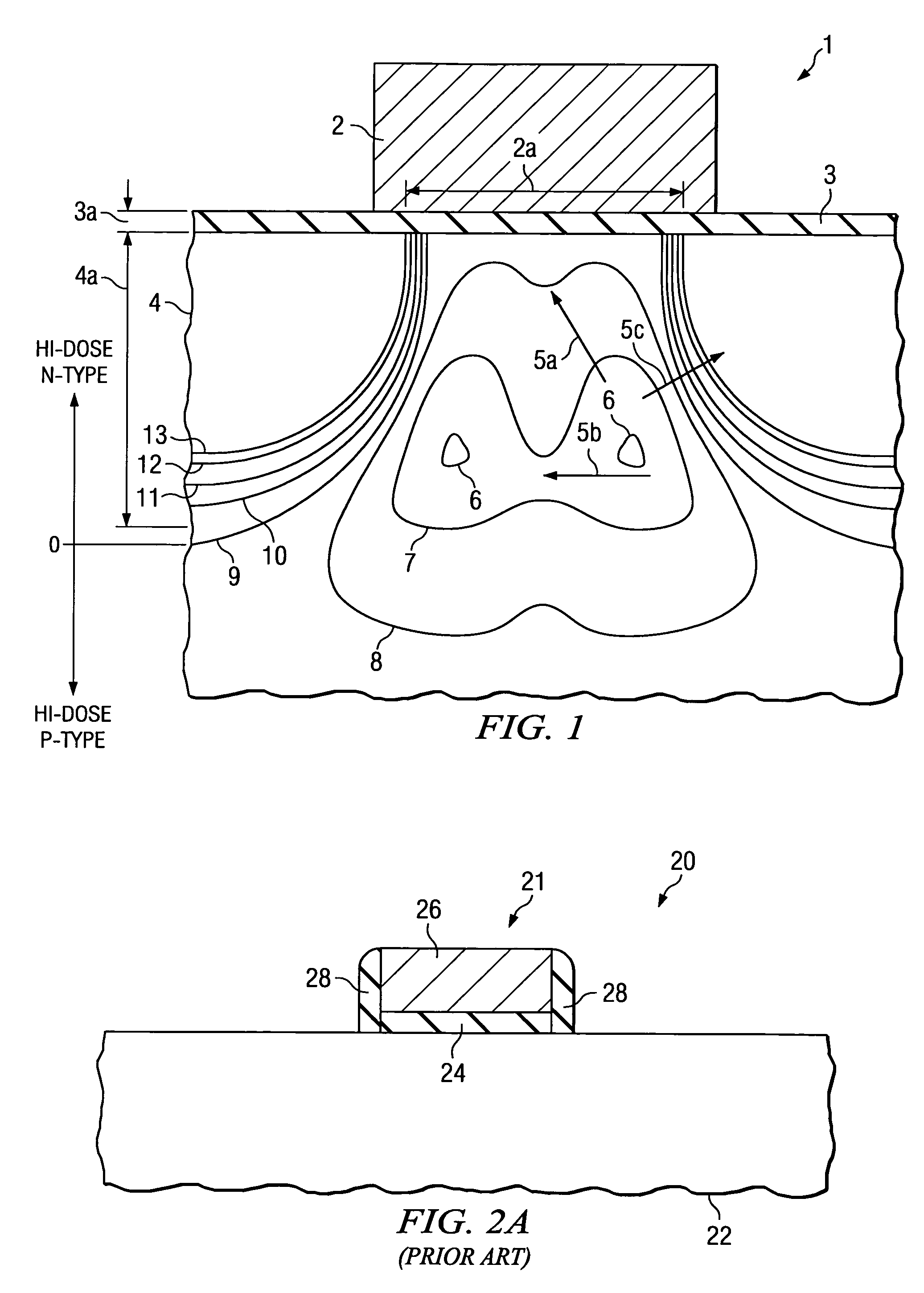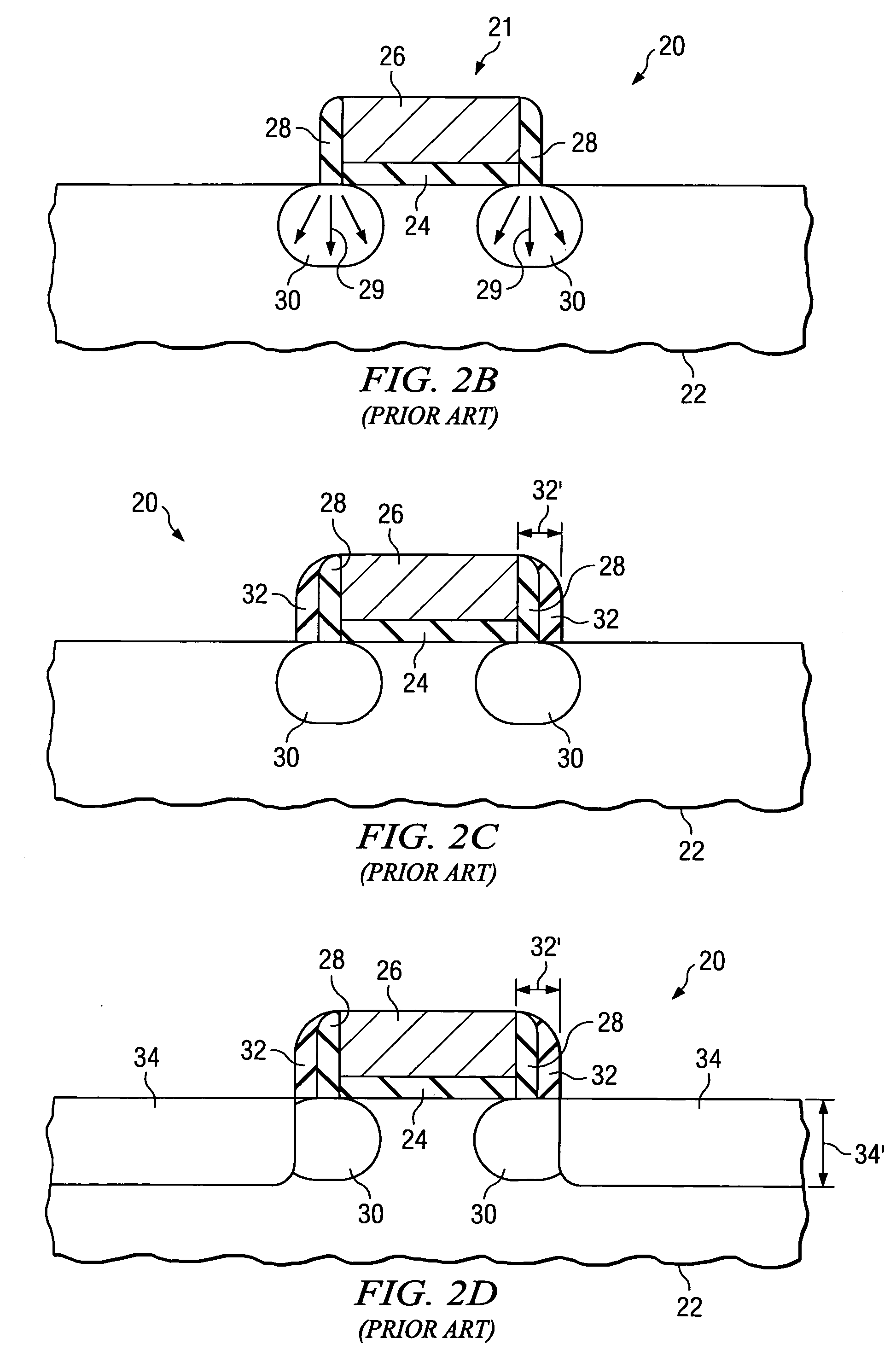Method to produce localized halo for MOS transistor
a technology of mos transistor and localized halo, which is applied in the direction of semiconductor devices, basic electric elements, electrical equipment, etc., can solve the problems of reducing the distance between the source and the drain, reducing the accuracy and repeatability of localized halo structures, and increasing the computational power and speed of personal devices
- Summary
- Abstract
- Description
- Claims
- Application Information
AI Technical Summary
Benefits of technology
Problems solved by technology
Method used
Image
Examples
Embodiment Construction
[0064]The present invention will now be described with reference to the attached drawings, wherein like reference numerals are used to refer to like elements throughout. The invention relates to methods and techniques used in forming localized halo (pocket) structures and shaping the dopant concentration and potential profiles within a semiconductor substrate of a MOS transistor and other such semiconductor devices. One or more implementations of the invention are hereinafter illustrated and described in the context of halo structures and halo structure formation in Si or SiGe semiconductor substrates. However, it will be appreciated by those skilled in the art that the invention is not limited to the exemplary implementations illustrated and described hereinafter. In particular, the various aspects of the invention may be employed in association with the processing of other such substrate materials in devices using various dopants including boron or arsenic, and various dopant conc...
PUM
 Login to View More
Login to View More Abstract
Description
Claims
Application Information
 Login to View More
Login to View More - R&D
- Intellectual Property
- Life Sciences
- Materials
- Tech Scout
- Unparalleled Data Quality
- Higher Quality Content
- 60% Fewer Hallucinations
Browse by: Latest US Patents, China's latest patents, Technical Efficacy Thesaurus, Application Domain, Technology Topic, Popular Technical Reports.
© 2025 PatSnap. All rights reserved.Legal|Privacy policy|Modern Slavery Act Transparency Statement|Sitemap|About US| Contact US: help@patsnap.com



